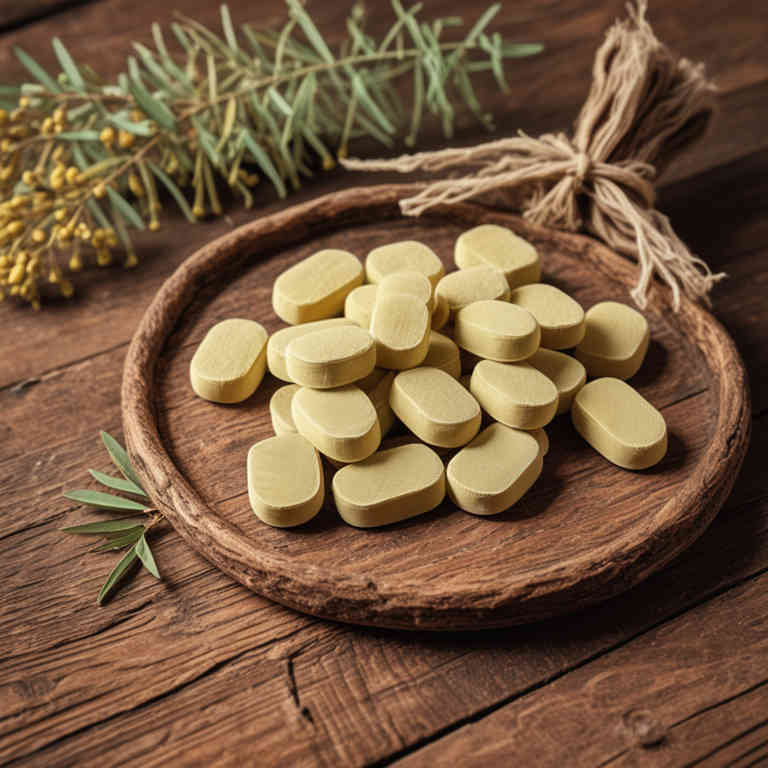Cassia auriculata lozenge for medicinal use

Cassia auriculata lozenge is a herbal preparation made from the dried leaves of the Cassia auriculata plant, which is native to tropical regions.
It is commonly used in traditional medicine for its anti-inflammatory and antimicrobial properties. The lozenge form allows for easy consumption, making it convenient for soothing throat irritations and respiratory conditions. In herbalism, it is often prescribed to treat coughs, sore throats, and mild respiratory infections.
Its aromatic and cooling properties are believed to help reduce inflammation and promote respiratory health.
Uses
Cassia auriculata lozenge has been used to treat various ailments, particularly those related to the respiratory and digestive systems.
Historically, it has been a key component in traditional Ayurvedic and Unani medicine, where it was valued for its antiseptic and anti-inflammatory properties. In traditional practices, the lozenge was used to soothe sore throats, reduce coughing, and alleviate symptoms of colds and bronchitis. Modern research has begun to explore its potential as a natural remedy for respiratory infections and its antimicrobial effects.
Today, it is still used in some herbal formulations to support throat health and as a complementary therapy in holistic medicine.
Benefits
Cassia auriculata lozenge has health benefits such as improving oral health, reducing inflammation, and supporting respiratory wellness.
It is traditionally used to soothe sore throats and alleviate symptoms of colds and coughs due to its antiseptic and anti-inflammatory properties. The lozenge contains compounds like flavonoids and tannins, which contribute to its therapeutic effects. It may also help in reducing bacterial growth in the mouth, promoting better dental hygiene.
Additionally, it is believed to have mild antioxidant properties that support overall immune function.
Constituents
Cassia auriculata lozenge active constituents include flavonoids, tannins, alkaloids, and saponins.
These compounds are known for their anti-inflammatory, antimicrobial, and antioxidant properties. The lozenge is traditionally used to soothe sore throats and reduce inflammation in the respiratory tract. It may also support digestive health due to its astringent and carminative effects.
The combination of these active constituents makes Cassia auriculata lozenge a valuable herbal preparation for various health purposes.
Preparation
To make Cassia auriculata lozenge, first gather fresh or dried Cassia auriculata leaves, which are known for their anti-inflammatory and antimicrobial properties.
Wash the leaves thoroughly and chop them into small pieces to facilitate extraction. Boil the chopped leaves in water for about 15 minutes to create a strong herbal infusion. Strain the liquid and mix it with a binding agent such as honey or gum arabic to form a paste.
Shape the mixture into small lozenges and allow them to dry in a cool, dark place until firm.
Side Effects
Cassia auriculata lozenge may lead to gastrointestinal discomfort, including nausea, vomiting, and diarrhea, due to its high concentration of compounds like tannins and flavonoids.
It may also cause allergic reactions in individuals sensitive to plants in the legume family. Prolonged use could potentially lead to liver or kidney damage, as some studies suggest hepatotoxic effects. Additionally, it may interact with certain medications, particularly those affecting the cardiovascular or central nervous systems.
It is important to consult a healthcare professional before using this preparation, especially for pregnant or breastfeeding women and individuals with pre-existing medical conditions.